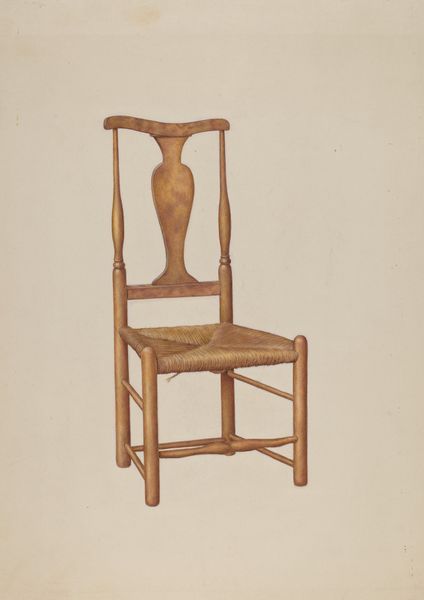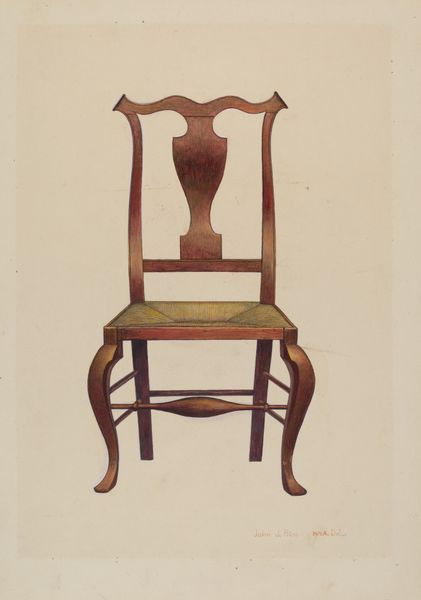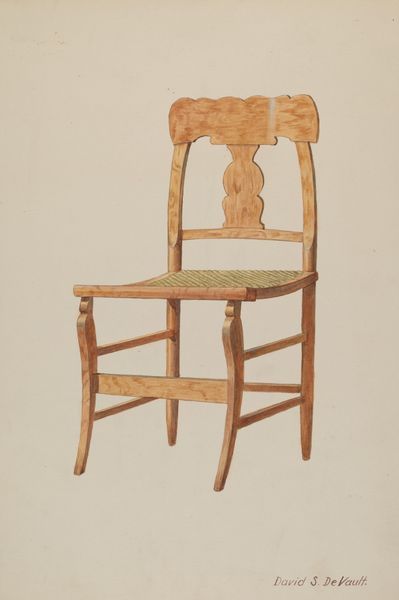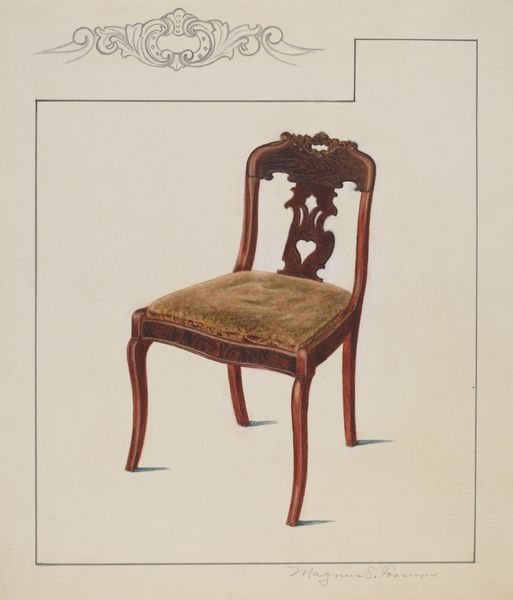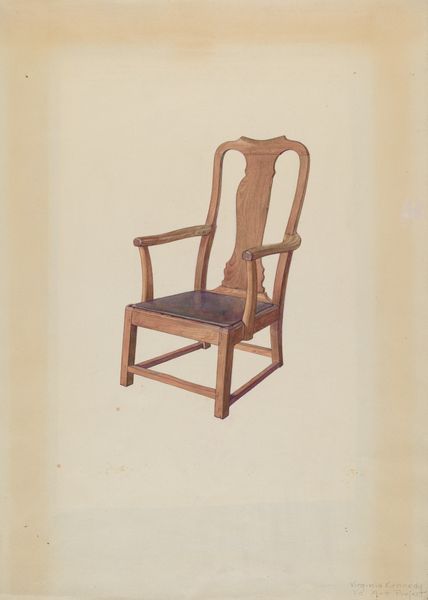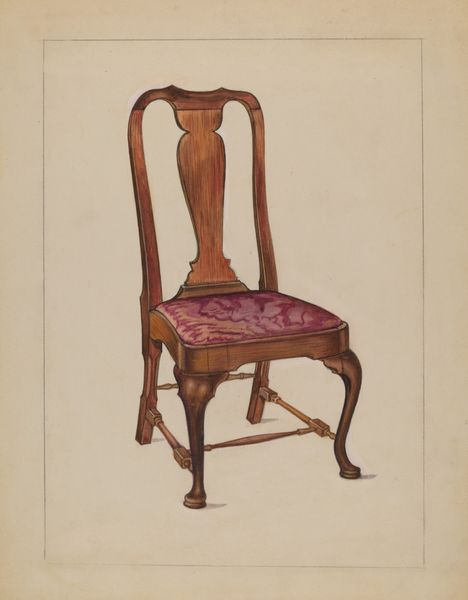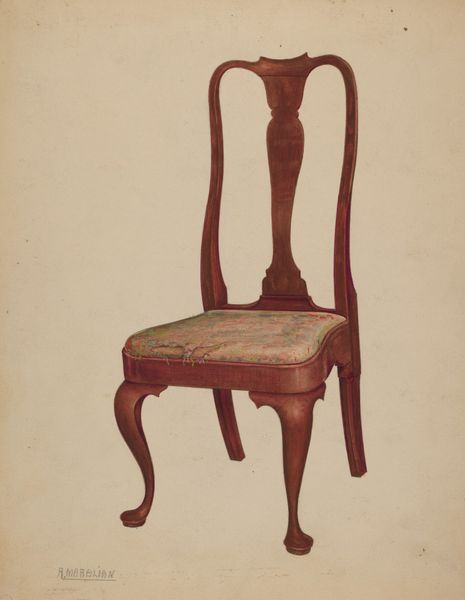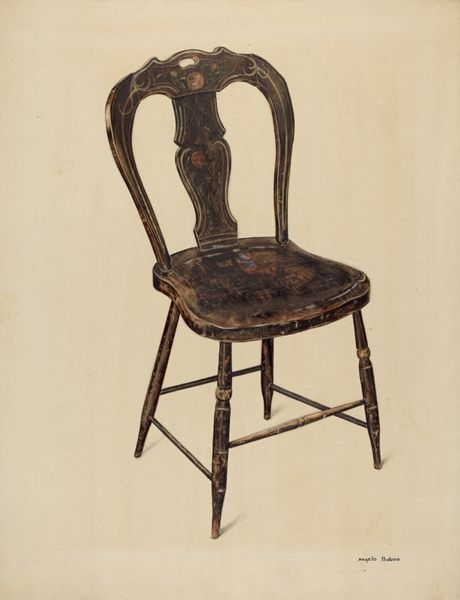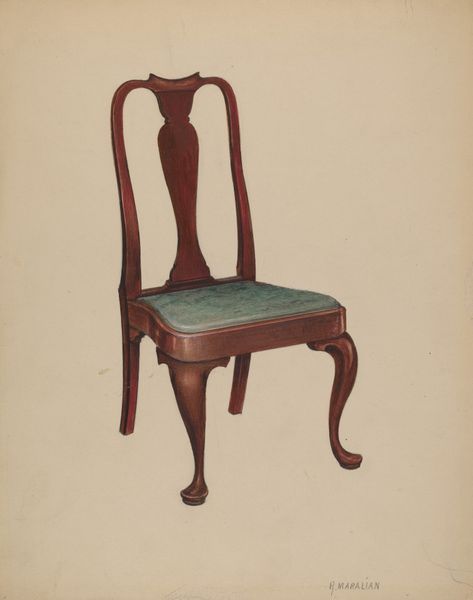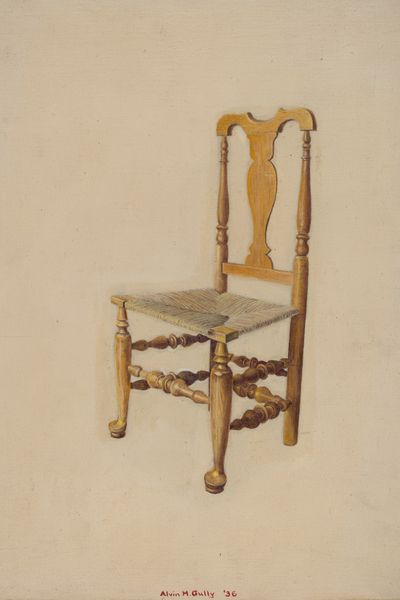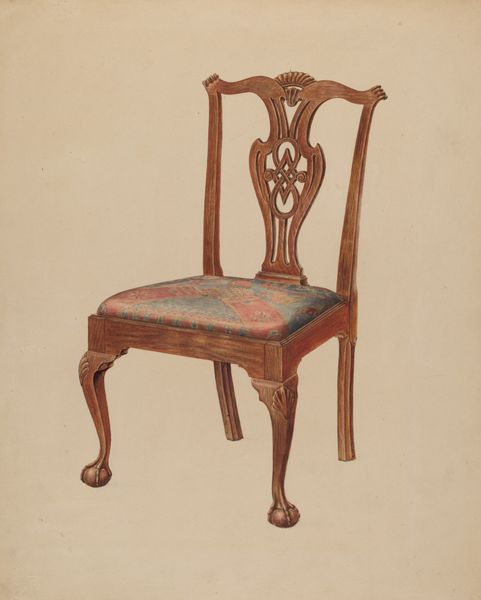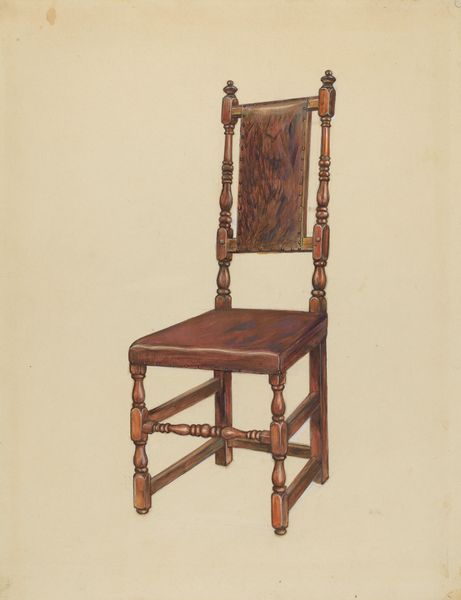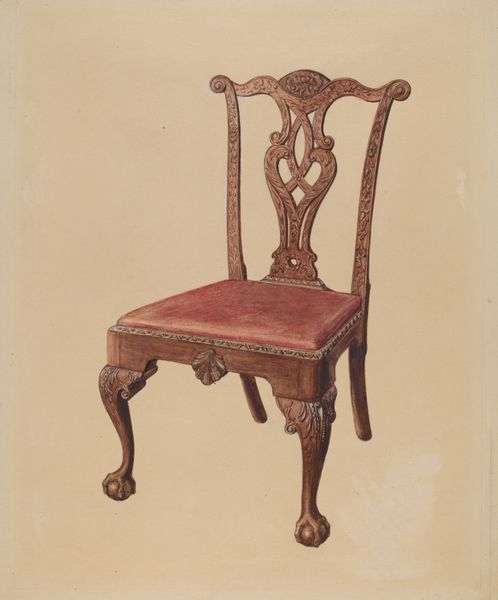
drawing, watercolor, pencil
#
drawing
#
charcoal drawing
#
watercolor
#
pencil
#
watercolour illustration
#
watercolor
#
realism
Dimensions: overall: 35 x 24.7 cm (13 3/4 x 9 3/4 in.) Original IAD Object: 32 5/8"high, 16 3/4" at widest pt., 16 1/2" deep, seat. See d.s. for dets.
Copyright: National Gallery of Art: CC0 1.0
Curator: So, before us, we have Ralph Morton's "Dining Room Chair," a piece believed to be from around 1939. Editor: There's something instantly calming about this image. The soft hues, the unassuming subject…it feels like stepping back into a simpler time. What medium did Morton employ? Curator: Morton used a combination of pencil, charcoal and watercolor to realize it. You can clearly observe how he utilized varying weights to show off both material substance and fine detailing. Editor: The chair itself— such a commonplace object, transformed through the artistry of both crafting and rendition. I mean, the woven seat, those delicate curves. There is immense craft. What more can you tell me about the historical situation this artwork emerged from? Curator: Well, this was during the tail end of the Great Depression, and into the first inklings of World War II for other countries—a time when people focused perhaps more on their immediate surroundings, the home. I get a very subtle nod towards American Regionalism in terms of theme and intent. A focus on localized existence. Editor: Absolutely, it's about appreciating what you have and seeing the beauty in the everyday, almost turning it into high art, like…elevating domestic life but not erasing the inherent labor that builds it up. Consider how many hours went into both creating this singular object. Then think about the hand and skill to create such a photorealistic likeness! Curator: Yes, it asks questions about artistry: from manufacture of furniture to visual capture. It dances between artistic practices… Is it functional object? Aesthetic object? I am unsure which Morton prioritized when committing this moment to paper. But his ability to coax the play of light on wood is extraordinary, don’t you think? Editor: Definitely. I came for the simple quietness of the composition, and have since left considering all the invisible hands that produced this object we take for granted daily. Curator: Likewise! A chair seems so…unassuming. Yet, like all artistic captures of functional objects, so many narratives about craftsmanship and historical contexts swirl beneath its serene surface.
Comments
No comments
Be the first to comment and join the conversation on the ultimate creative platform.
